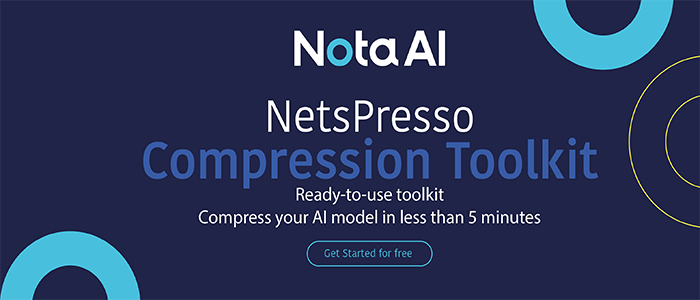Researchers From China Introduce An Hybrid AI-HPC Framework In Their Latest Research To Demonstrate The Effectiveness Of Solving The Quantum Many-Body Problem Via Deep Learning Methods On The Supercomputer Platform
This Article Is Based On The Research Paper '2^1296 Exponentially Complex Quantum Many-Body Simulation via Scalable Deep Learning Method'. All Credit For This Research Goes To The Researchers Of This Paper 👏👏👏 ✍ Submit AI Related News/Story/PR Here Please Don't Forget To Join Our ML Subreddit
Studies related to strongly correlated quantum many-body in physics are emerging as a promising research domain. When many minuscule particles interact, quantum entanglement develops, and novel physical phenomena such as (high-temperature) superconductivity occur. Researchers believe that solving these difficulties will help better understand the natural world’s underlying rules, which could have a wide range of applications in energy, information, and other fields.
Even though the fundamental rules of quantum physics are well understood, addressing strongly coupled quantum many-particle issues remains a difficult task. This is because the size of the problem causes the Hilbert space of the solution to increase exponentially. Furthermore, despite their efficacy in simulating weakly correlated material systems, perturbative approaches will entirely fail to simulate strongly correlated systems.
A new paper, “2^1296 Exponentially Complex Quantum Many-Body Simulation via Scalable Deep Learning Method,” introduces a hybrid AI-HPC framework for the next-generation Sunway system in addition to neural network designs and deep learning principles enabling researchers to solve massive and highly complex problems. The study is carried out by a team of researchers from the University of Science and Technology of China, Pilot National Laboratory for Marine Science and Technology (Qingdao), China, School of Mathematical Sciences, Peking University, Beijing, National Supercomputing Center in Wuxi, Ocean University of China.

The team coupled the deep CNN neural network structures’ exceptional representation ability with a highly scalable and finetuned implementation on heterogeneous Sunway architectures. They have used the optimized HPC-AI framework and up to 40 million heterogeneous SW26010Pro cores.
The researchers developed two deep convolutional neural network (CNN) structures, one for the spin model and the other for the Fermion model. The CNN is less difficult, and it can scale to very large lattices by using translational invariance. The second CNN’s structure is similar to the first, with a few tweaks to account for the spin model.
The nonlinearity is caused by max-pooling rather than activation functions in both CNN structures. The wavefunction coefficient is formed by the product of neurons rather than the exponential function in other designs.
The researchers have mentioned in their paper that current deep learning frameworks and model optimizations are inefficient, even though the quantum many-body problem is in the domain of dimensional reduction and feature extraction in a much border context. According to them, this is because of two major challenges:
- The input and network sizes used in physics are often smaller than those used in popular deep learning applications. In such scenarios, insufficient computation results in low computational efficiency and hardware usage.
- For the most common first-order gradient optimizer (i.e., Adam, SGD) and mini-batch-based training, finding the minimum global energy is problematic. HPC-AI hybrid architecture works efficiently on the new Sunway supercomputer to overcome the challenges above and achieve multiple gains.
The framework runs on the Sunway supercomputer’s next-generation CPU, the sw26010pro. The new chip is divided into six core groups, each of which is connected to a ring network. Each core group has a management process element that oversees the 64 computing process elements.
The management element is also in charge of the global memory, while the compute elements are in charge of completing the tasks assigned by the management element. Each compute element has a local directive memory (LDM), analogous to shared memory in a GPU.
The 64 compute elements in the new Sunway system offer most of the compute performance for each core group. That is why nearly all of those elements must be utilized to achieve the highest performance.
The scientists optimized the operators separately on Sunway’s heterogeneous chips because the neural networks used in this project have a lot of memory-intensive operations and are limited by the gap between computing capability and memory access bandwidth.
The new Sunway supercomputer’s software environment has improved substantially, particularly for AI applications. The latest Sunway supercomputer generation has a lot of potential for tackling diverse HPC and AI difficulties.
The researchers obtained their findings through simulations of quantum many-body issues, combining the latest deep-learning technology with the next-generation Sunway platform. Their results show the model’s excellent performance and efficiency, focusing on scalability enabled by the latest Sunway chips up to 40 million heterogeneous cores, with applications hitting 94 percent weak scaling efficiency and 72 percent strong scaling efficiency.
The framework can also be easily adapted to other supercomputers, according to the team.
Paper: https://arxiv.org/pdf/2204.07816.pdf
Source: https://www.nextplatform.com/2022/04/26/china-stretches-another-ai-framework-to-exascale/
Credit: Source link


Comments are closed.